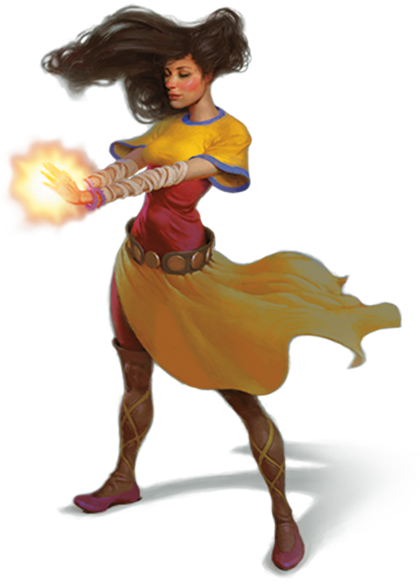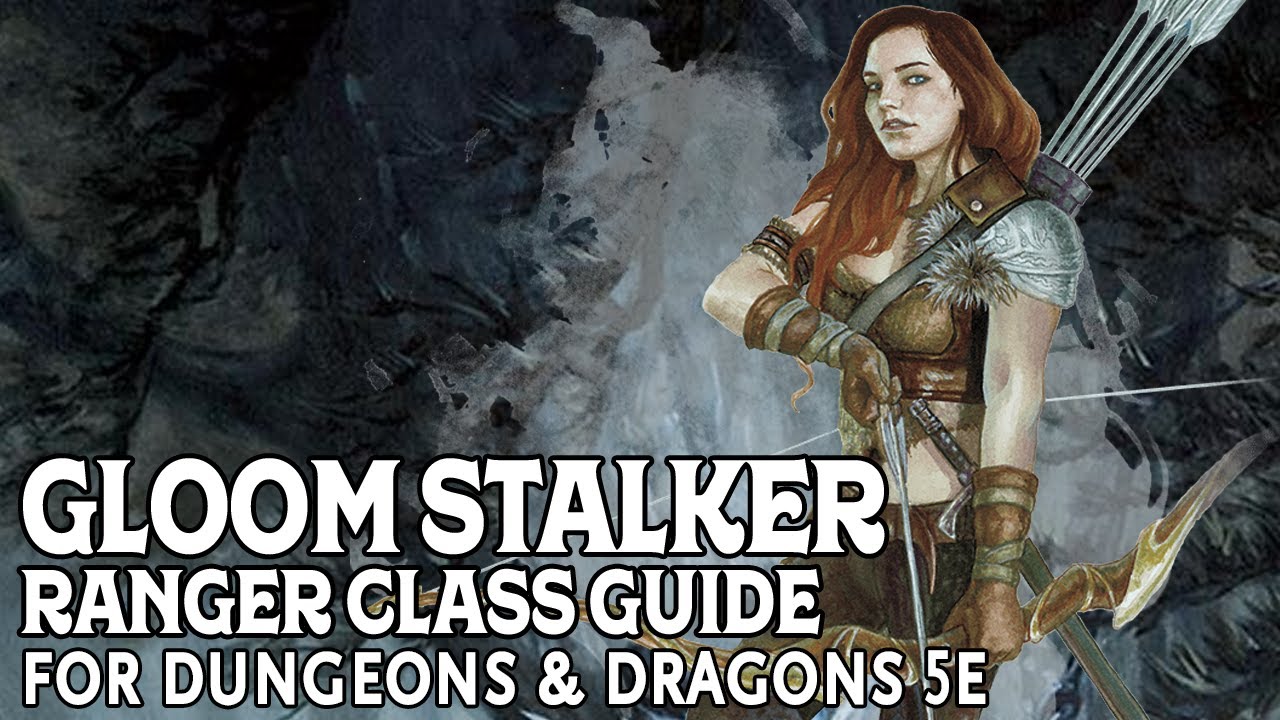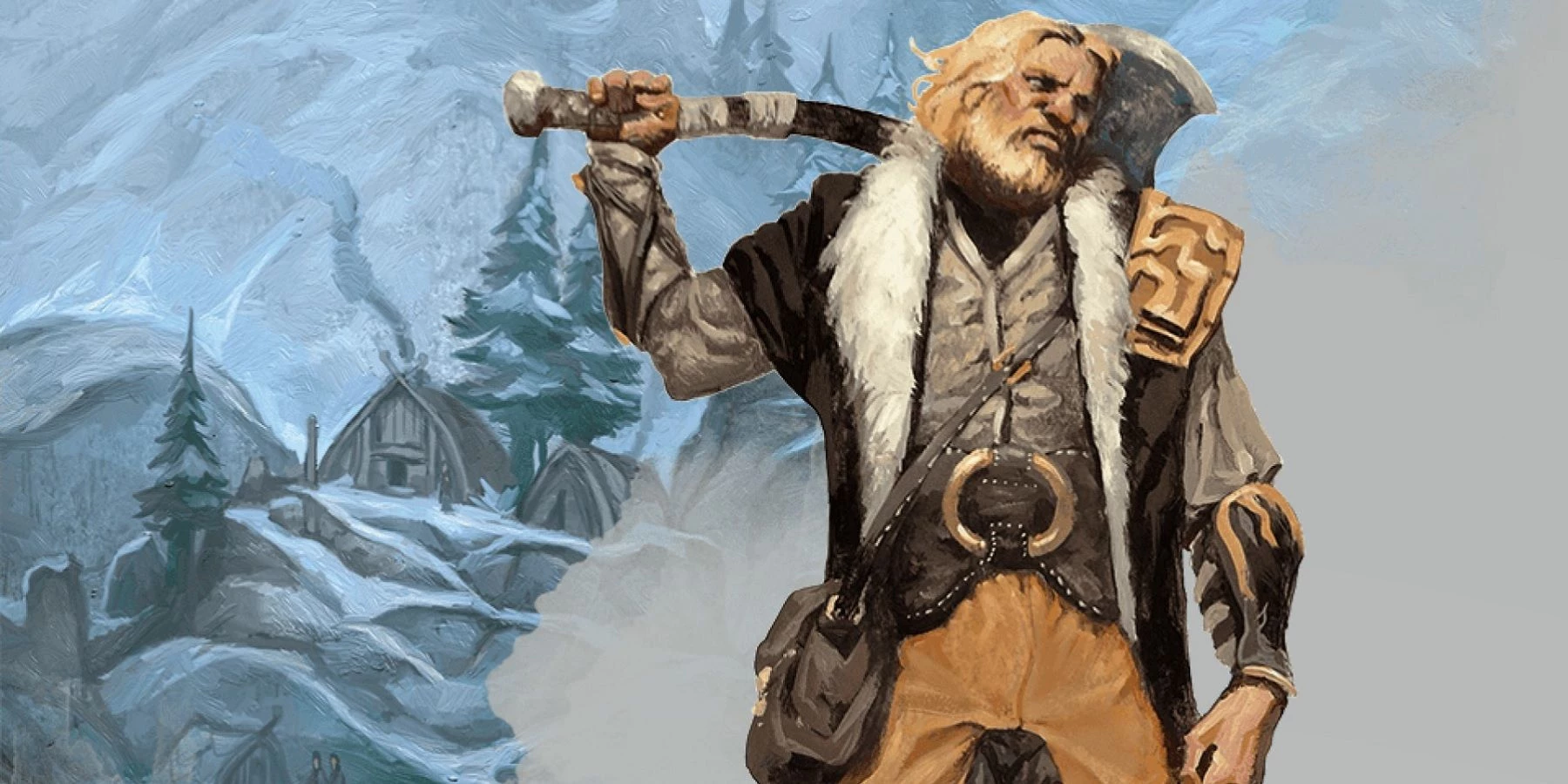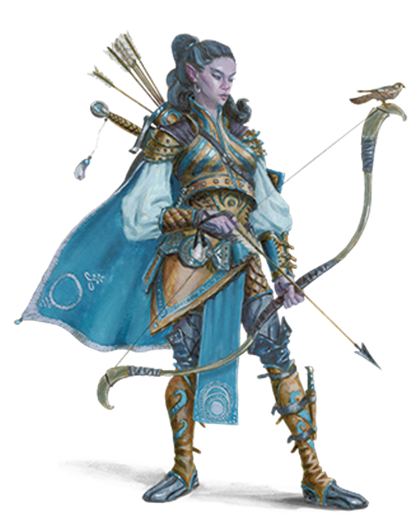Monk Class Information:
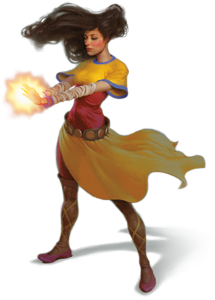
Monk is typically a man of a religious figure who lives in a monastery. Further, we will explicit every single detail of a monk. A half-elf leaps over a wall and hurls herself into the massed ranks of hobgoblins on the other side, her fists blurring as they evade an incoming volley of arrows. She spins among them, deflecting their punches and sending them sprawling until she finally stands alone.
After taking a deep breath, a human covered in tattoos assumes a combat stance. As the first charging orcs approach him, he exhales, and fire erupts from his mouth, engulfing his adversaries.
A black-clad Halfling moves with the night’s silence, stepping into a shadow beneath an arch and emerging from another shade a little distance away on a balcony. She removes her blade from its sheath and glances through the open window at the sleeping tyrant prince, who appears defenseless.
Regardless of their discipline, all monks can effortlessly harness the energy that flows through their bodies. This force infuses everything a monk does, whether channeled as a dazzling display of martial prowess or as a discreet concentration on defensive skill and speed.
The Mystery of Ki:
Monastic traditions refer to ki as magical energy that monks carefully examine. This energy is a component of the magic that permeates the multiverse; mainly, it is the component that runs through living organisms. Monks harness this power within themselves to generate magical effects beyond their bodies’ physical capabilities, and some of their particular strikes can impede the flow of ki in their opponents. Using this energy, monks imbue their unarmed strikes with fantastic speed and power. Their martial training and ki mastery allow them more control over their bodies and the bodies of their opponents as they gain experience.
The landscapes of the Dungeons & Dragons realms are dotted with small, walled cloisters where time seems to stand still. There, monks pursue personal perfection through contemplation and rigorous training. they sent many children to the monastery due to the death of their parents, a lack of food, or in exchange for some act of compassion performed by the monks for their families.
Some monks live in complete isolation from the surrounding populace and everything that could impair their spiritual development. Others are bound to seclusion, only emerging to serve as spies or assassins at the order of their commander, a noble patron, or another mortal or divine authority.
Most monks do not ignore their neighbors, frequently visiting adjacent cities and villages in exchange for food and supplies. As flexible soldiers, monks often wind themselves defending their neighbors from monsters or despots.
To become an adventurer, a monk must abandon their organized, communal lifestyle and become nomads. This change can be difficult, and monks do not undertake it lightly. Those who leave their cloisters treat their endeavors as tests of their physical and spiritual development. As a rule, monks are motivated by a desire to complete a bigger mission than simply murdering monsters and stealing their gold.
Developing a Monk;
Consider your relationship to the monastery where you learned your talents and spent your formative years as you create your monk character. Were you an orphan or a youngster abandoned at the sanctuary? Your parents may have promised you to the monastery as a gesture of appreciation for a service rendered by the monks. Did you choose this solitary lifestyle to conceal a crime you committed? Or did you voluntarily choose the monastic life?
Think about why you left. Your monastery’s abbot may have selected you for an essential task outside the cloister. Perhaps you were expelled for violating the rules of the community. Did you dread your departure, or were you excited? Do you hope to accomplish anything beyond the monastery? Are you anxious to return to your residence?
Because of the strict rules of monkhood and the effort required to develop one’s ki, monks are typically well-aligned with the laws of nature.
QUICK BUILD:
By following these tips, you can become a monk rapidly. First, maximize your Dexterity score, then your Wisdom score. Select the hermit background second.
Proficiencies
Defenses: None
Simple weapons and short swords
Select one type of artisan’s tools and one musical instrument.
Saving Throws: Agility, Strength
Choose two from the following categories: Acrobatics, Athletics, History, Insight, Religion, and Stealth.
Equipment:
In addition to the equipment provided by your background, you begin to play with the following items:
(a) a shortsword or (b) any straightforward weapon
a dungeon master’s pack or an explorer’s pack.
Ten darts
Unarmored Defense
Your AC equals 10 + your Dexterity modifier + your Wisdom modifier when unarmored and unyielding a shield, beginning at 1st level.
Martial Arts:
At 1st level, your martial arts training grants you mastery over combat methods using unarmed strikes and monk weapons, including short swords and any simple melee weapons without the two-handed or heavy property.
While unarmed or using just monk weapons and without wearing armor or holding a shield, you have the following benefits:
You can substitute Dexterity for Strength when rolling for attack and damage with unarmed attacks and monk weapons.
You can roll a d4 instead of your unarmed attack or monk weapon’s standard damage. This die alters as your monk level increases, as seen in the Martial Arts column of the chart for monks.
On your turn, when you use the Attack action with an unarmed strike or a monk weapon, you can make an additional unarmed strike. For instance, if you take the Attack action and attack with a quarterstaff, you can make an unarmed strike as a bonus action if you have not previously taken a bonus action this turn.
Certain monasteries make use of specialized monk weapons. For instance, you may use a nunchaku, consisting of two lengths of wood joined by a short chain, or a sickle with a faster, straighter blade (called a kama). Regardless of the name you give a monk’s weapon, you can use the game statistics shown in the Weapons section.
Ki:
Your training allows you to harness the magical energy of ki, beginning at the second level. Several ki points correspond to your access to this energy. Your Ki points are determined by your monk level, as displayed in the Ki Points column of the Monk table.
you can use these points to fuel numerous ki functions. You become familiar with Flurry of Blows, Patient Defense, and Step of the Wind. As players gain ranks in this skill, they gain access to extra ki abilities.
When you spend a ki point, it becomes unavailable until the conclusion of a short or long rest, when you regain all of the ki you expended. You must meditate for at least 30 minutes during your rest to replenish your ki points.
Some of your ki abilities necessitate that the target makes a saving throw against their effects. The DC for the saving throw is computed as follows:
Ki saving throw DC = 8 + your proficiency bonus + your Wisdom modifier.
The frenzy of Strikes:
Immediately after taking the Strike reaction on your roll, you can expend 1 Ki to perform two unarmed attacks as a bonus action.
Patient Defense:
You may expend 1 Ki to perform the Dodge action as a bonus during your turn.
Wind’s Approach:
You can spend one ki point as a bonus to take the Disengage or Dash action, and your jump distance is doubled during the turn.
Unarmored Mobility:
At the 2nd level, your speed increases by 10 feet when you are not wearing armor or wielding a shield. As indicated in the Monk table, this benefit grows as your monk level increases.
At level 9, you obtain the ability to move on your turn along vertical surfaces and through liquids without falling.
Monastic History:
At the 3rd level, you choose a monastic tradition, either the Way of the Open Hand explained after the class description or one from another source. Your custom grants you abilities at the 3rd level, 6th level, 11th level, and 17th level.
Deflect Missiles:
Starting at the 3rd level, you can use your response to deflect or capture the projectile when a ranged weapon attack strikes you. This reduces the damage you receive from the attack by 1d10 + your Dexterity modifier + your monk level.
If the missile’s damage is 0 and you have one free hand, you can catch it. If you catch a missile this way, you may expend 1 ki point to perform a ranged attack with the seized weapon or ammo. This attack counts as a monk weapon with a regular range of 20 feet and an extended range of 60 feet.
Ability Score Increase:
At the 4th level, 8th level, 12th level, 16th level, and 19th level, you can increase one ability score of your choice by 2, or you can increase two ability scores by 1. you cannot use this feature to improve an ability score beyond 20 as usual.
Using the optional feats rule, you may forego this ability in favor of your chosen feat.
Slow Decay:
At the 4th level, when you fall, you can use your reaction to reduce falling damage by an amount equal to five times your monk level.
Extra Attack:
Beginning at the 5th level, whenever you take the Attack action on your turn, you can attack twice instead of once.
Stunning Strike:
At the 5th level, you can disrupt the flow of ki within an opponent’s body. When you successfully hit an opponent with a melee weapon attack, you can spend 1 Ki to attempt a stunning blow. The target must succeed on a Constitution saving throw or become stunned until your next turn.
Ki-Empowered Strikes:
At the 6th level, your unarmed strikes are treated as magical to overcome resistance and immunity to nonmagical damage and attacks.
Unarmored Mobility:
Your Unarmored Speed bonus increases to 15 feet at the 6th level when you are not wearing armor or wielding a shield.
Evasion:
At the 7th level, your natural agility enables you to avoid specific area effects, such as the blue dragon’s lightning breath or a fireball spell. You take no damage if you succeed on a Dexterity saving throw and half damage if you fail.
The quietude of Mind:
You can begin at the 7th level and use your action to end one effect that causes you to be charmed or frightened.
Unarmored Mobility Enhancement:
At level 9, you obtain the ability to move on your turn along vertical surfaces and through liquids without falling.
The pureness of Body:
At level 10, your mastery of the ki that flows through you confers immunity to disease and poison.
Unarmored Mobility:
Your Unarmored Speed bonus increases to 20 feet at 10th level when you are not wearing armor or wielding a shield.
Sun and Moon’s Language:
Beginning at level 13, you learn to access the ki of other minds to comprehend all spoken languages. Furthermore, any intelligent creature can understand what you are saying.
Diamond Spirit:
Your mastery of ki grants you proficiency with all saving throws at the 14th level.
In addition, if you fail a saving throw, you can reroll it and take the second result by spending one ki point.
Unarmored Mobility:
At the 14th level, when you are not wearing armor or wielding a shield, your Unarmored Speed bonus increases to 25 feet.
Ageless Form:
At the 15th level, your ki sustains you to the point where you no longer age and cannot be magically aged. However, you can still die of old age. Moreover, you no longer require food or water.
Vacant Body:
At level 18, you can use your action and four ki points to become invisible for 1 minute. During this duration, you have resistance to all types of damage except force damage.
In addition, you can cast the astral projection spell without material components by expending 8 Ki points. When you do so, you cannot bring along any other creatures.
Unarmored Mobility:
At 18th level, while not wearing armor or wielding a shield, your Unarmored Speed bonus increases to 30 feet.
Excellent Self:
At level 20, when you roll for initiative with no remaining ki points, you regain four ki points.
Monastic Observances:
In the monasteries dispersed throughout the multiverse, three traditions of monastic pursuit are common. A few monasteries honor all three traditions and educate each monk according to aptitude and interest, whereas most monasteries adhere solely to one. All three practices utilize the same fundamental techniques but diverge as the student gains proficiency. Thus, a monk must only choose a tradition at level 3.
The Cobalt Soul Path:
-
THIS IS AN UNOFFICIAL DOCUMENT:
These game mechanics are usable in your campaign if your DM permits but have not been refined through final game design and editing. They are not part of the official Dungeons & Dragons game and are not authorized in D&D Adventurers League events unless otherwise specified. To access this content, turn on Critical Role Content in the character creator.
The Library of the Cobalt Soul is one of Exandria’s most treasured and guarded libraries. It’s fueled by academics’ adoration of the Knowing Mentor. People from over the globe visit the library in pursuit of information, and those who value truth often join the Cobalt Soul. Becoming a member of the Cobalt Soul involves understanding life’s mysteries, exposing the secrets of hidden evil, and preserving the most potent and deadly truths from people whose unwholesome appetite for knowledge might bring death and pain.
The monks of the Cobalt Soul exemplify the adage “Know your enemy”; by conducting exhaustive research, they fortify themselves against the relentless tides of evil. They learn to overcome their opponent’s mental and physical defenses through rigorous training. After the battle, they document their findings for future generations of monks to study.
-
Extract Elements:
Beginning at the 3rd level, you can attack pressure points to discern vital information about an opponent. When you hit a creature with one of your Flurry of Blows-granted attacks, you can analyze it. When an examined animal misses you with an attack, you can immediately use your reaction to launch an unarmed strike against it if it is within reach. This benefit remains in effect until you complete a short or long rest.
In addition, when you analyze a creature, you gain knowledge of its damage vulnerabilities, resistances, damage immunities, and condition immunities.
-
Extricate Truth:
Starting at the 6th level, you can strike a creature’s hidden nerve cluster, temporarily preventing it from concealing its true thoughts and intentions. You can spend one ki point to force a creature you hit with an unarmed strike to make a Charisma saving throw. On a failed saving throw, the animal is incapable of speaking a deliberate lie, and all Charisma checks against it for up to 10 minutes gain an advantage. You are aware of the outcome of its saving throw.
The affected creature is aware of the effect and can avoid answering questions with untruthful answers. Such a creature can provide evasive responses as long as the effect lasts.
If you want to apply this effect to a creature without inflicting damage, you can attach it to touch it without dealing damage simply.
-
Mystical Knowledge:
It is necessary to gain proficiency in one of the following skills: Arcana, History, Investigation, Nature, or. You also gain ability in a language of your choosing. If you already have command in one of the listed skills, you may instead choose to double your proficiency bonus on ability checks that use that proficiency.
At the 11th and 17th levels, you gain an additional language and skill proficiency from the list above (or you can double the bonus of an existing command from the list).
-
Mental Mercury:
You have honed your awareness and reflexes beginning at level 11 through mental aptitude and pattern recognition. Once per turn, if you have already taken your reaction, you may expend one ki point to take a second reaction. One response per triggering effect is permitted.
-
Mystical Knowledge (Additional):
At the 11th level, you gain an additional language and skill proficiency from the list above, or you can double the bonus of a current ability from the list.
-
Debilitating Barrage:
You’ve learned how to control a creature’s ki to weaken its willpower at level 17. When you hit a creature with an unarmed attack, you can expend three ki points to make it vulnerable to a damage type of your choosing for 1 minute or until the end of its next turn if it has taken damage of that type.
If a creature has resistance to the kind of damage you choose, its opposition is suppressed for 1 minute instead of developing vulnerability. Unaffected is any creature immune to the type of damage you select. An animal that has been affected by this ability cannot again be influenced by it for 24 hours.
-
Mystical Knowledge (Additional):
At the 17th level, you gain an additional language and skill proficiency from the list above, or you can double the bonus of a current ability from the list.
-
Method of the Open Hand:
Monks of the Way of the Open Hand are the supreme masters of unarmed and armed martial arts combat. They study tactics to push and trip their opponents, use ki to repair bodily injuries, and practice advanced meditation to defend themselves from attack.
-
Open Hand Technique:
Starting at the 3rd level, when selecting this tradition, you can affect your opponent’s ki when you harness your own. Whenever one of your Flurry of Blows-granted attacks hits a creature, you can apply one of the following effects to that creature:
It must succeed on a Dexterity saving throw or become incapacitated.
It must make a Strength saving throw. You can push it up to 15 feet away from you if it fails.
It is unable to take action until the conclusion of your next turn.
-
Tranquility:
You can enter a special meditation that surrounds you with an aura of tranquility at level 11. You acquire the effect of a sanctuary spell after a long rest that lasts until the beginning of your next long rest (the spell can end early as usual). The saving throw DC equals eight plus your Wisdom modifier plus your proficiency bonus.
-
Fluctuating Palm:
At level 17, you have the power to inflict fatal vibrations on an opponent. When you attack a creature with an unarmed strike, you can use 3 Ki to cause imperceptible vibrations that last several days equal to your monk level. The beats are innocuous until you make an effort to stop them. To accomplish this, you and the target must share the exact dimension of existence. When you use this action, the target creature must make a Constitution saving throw. If it fails, its hit points are lowered to 0. If successful, the target takes 10d10 necrotic damage.
You can only have one creature at a time under the effect of this ability. You have the option to terminate the vibrations without taking any action.
-
Developing a Monk:
Consider your monastic roots while creating your monk persona. Were you an orphan or an abandoned child? Your parents may have given you to the monastery as thanks for your service. Do you live alone to hide a crime? Did you choose monkhood?
Read Also: Clerics
